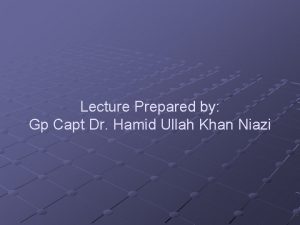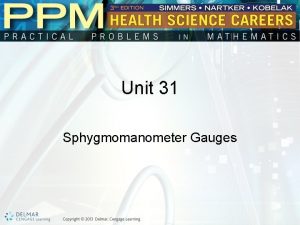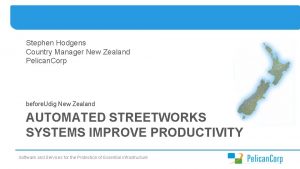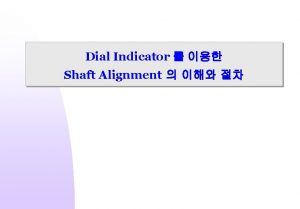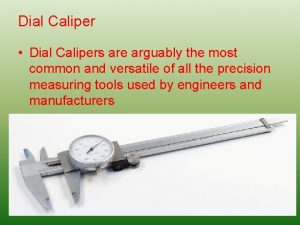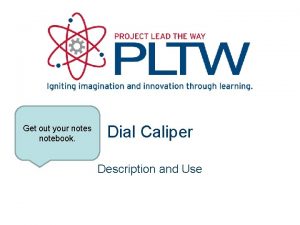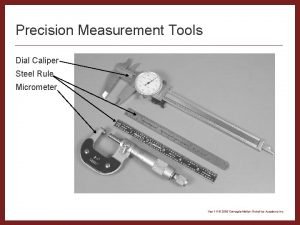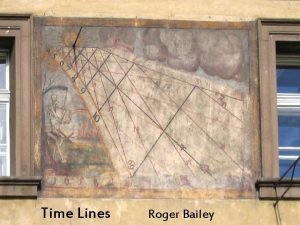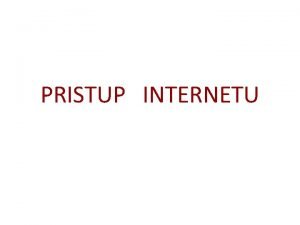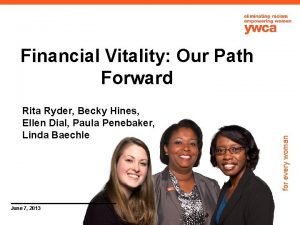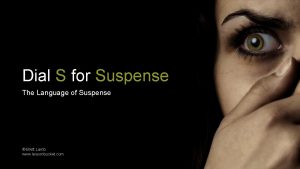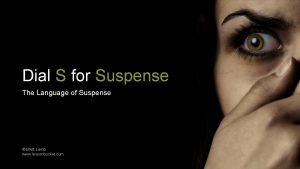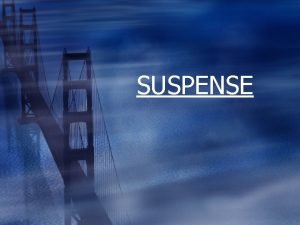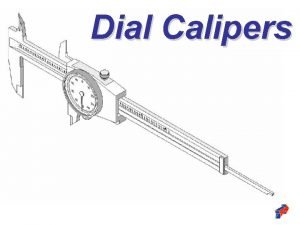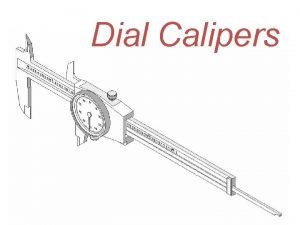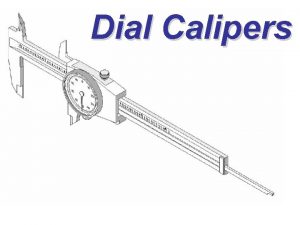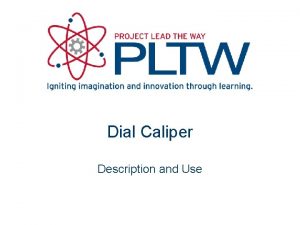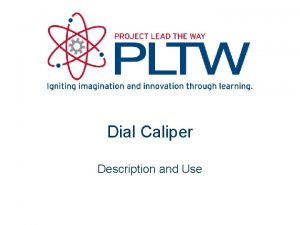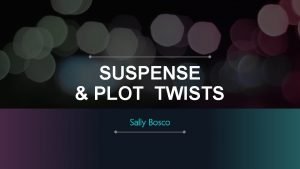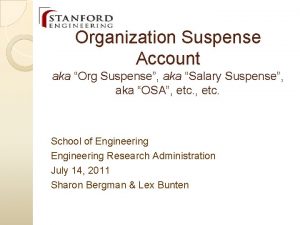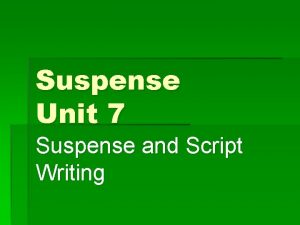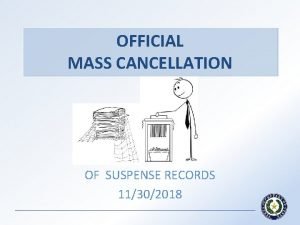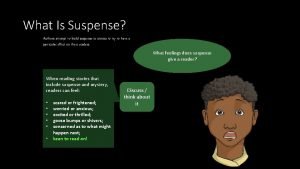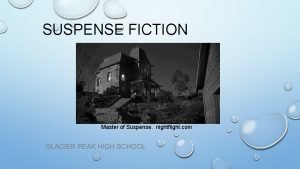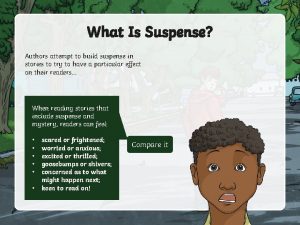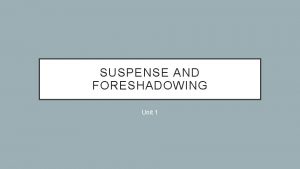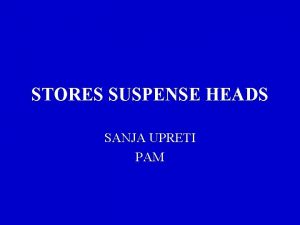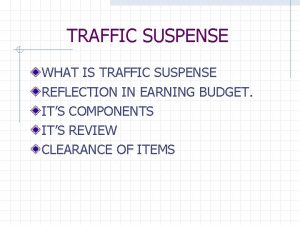Dial S for Suspense The Language of Suspense























- Slides: 23

Dial S for Suspense The Language of Suspense © Brett Lamb www. lessonbucket. com

What is suspense? • A feeling of anxiety that accompanies uncertainty about the outcome of a scene. • According to David Howard in How to Build a Great Screenplay, suspense can be found in almost any situation that causes a change in the life of a character.

A word from Hitchcock • Alfred Hitchcock, the master of suspense, once explained suspense by describing a bomb underneath a table. If the bomb explodes, the audience is given a shock. In a suspense film, however, the audience knows there's a bomb underneath the table. It's rigged to explode at one and the clock is ticking. "In these conditions, the same innocuous conversation becomes fascinating because the public is participating in the scene, " Hitchcock explained. "In the first case we have given the public fifteen seconds of surprise at the moment of the explosion. In the second we have provided them with fifteen minutes of suspense. "

Techniques for tension Creating a suspenseful short film

Suspenseful stories • Today we’re going to cover how you can create suspenseful short films • We’ll also look at the cinematic language of suspense, including: • Camera techniques. Handheld camera movement, framing, extreme close ups, point of view shots, camera angle. • Mise en scène. Color correction. • Editing. Parallel editing, pace, cutaways, slow motion. • Lighting. Low key lighting, back lighting, chiaroscuro lighting. • Sound. Diegetic and non-diegetic sound effects, music, and silence

Audience Expectations • Creating suspense involves manipulating audience knowledge and expectations. • You can manipulate these expectations to create suspense. Imagine the opening shot of a typical slasher flick. As she walks downstairs, we cut to a shot of the camera panning across broken glass and a billowing curtain. Someone’s in the house. This knowledge helps to create suspense. • Gus van Sant’s Elephant is a film about a high school shooting. Although nothing happens for most of the film, intense suspense is created by audience knowledge that the film will end with a shooting.

Character Identification • If your audience doesn’t care about your characters, they won’t feel suspense. • There a number of techniques filmmakers can use to encourage their audience to care about the characters in their film. In Secrets of Screenplay Structure, Linda J Cowgill suggests creating a connection with the audience by using universal emotions - such as fear, love, hate, injustice or embarrassment. • In Break into Screenwriting, Ray Frensham suggests finding ways to make your character familiar, likeable or intriguing to the audience.

Camera techniques Using the camera to generate tension

Handheld camera movement • Handheld camera movement creates a sense of realism and suspense.

Shot size • Close ups. If there’s a threat in your scene, using a close up increases audience anxiety by putting the character closer to the unseen threat. • Extreme close ups. Used to generate suspense by emphasizing small details - a screaming mouth, eyes wide in terror, a knife clasped in someone's hand, a ticking clock.

Camera framing • The framing of shots can also be used to manipulate audience expectations and generate anxiety, particularly if there is a threat lurking off-screen. • In The Village (M Night Shyamalan, 2004), Shyamalan uses framing to create suspense when Ivy Walker (Bryce Dallas Howard) is threatened by one of the creatures inhabiting the woods around her village. Standing on her front porch with her hand outstretched, Shyamalan uses space on the right hand side of the frame to imply that the threat will come from this direction. Instead, the creature emerges from the darkness in the middle of the frame.

Point of view • Point of view shots are another powerful way to create suspense, allowing the audience to see through the eyes of a character. This helps the audience to identify with characters and makes them feel as if they're in the scene themselves. • In Duel (Steven Spielberg, 1971), point of view shots are used extensively to encourage the audience to identify with David Mann (Dennis Weaver), a motorist who is terrified by a psychotic truck driver. When he pulls up at a gas station and the truck rumbles in beside him, director Steven Spielberg cuts from a close up of Weaver's concerned expression to point-of-view shots of the sinister truck driver as he idly kicks his tires.

Camera angle • Shooting characters from a high camera angle may make them look particularly vulnerable, increase audience identification and suspense. • Low angle shots can be used to make your antagonist or a location seem ominous. • In The Sixth Sense (M Night Shyamalan, 1999), Cole Sear (Haley Joel Osment) arrives at school, a place that he finds particularly terrifying and intimidating. Here, Shyamalan increases audience suspense and anxiety by using an extreme high angle to make Cole seem small and vulnerable as he stands apprehensively in front of the building.

Editing techniques The suspenseful cut

Parallel editing • Parallel editing, cutting between two events occurring at the same time, is another trick that directors use to generate suspense. • In The Girl with the Dragon Tattoo (David Fincher, 2011), parallel editing is used to create suspense when journalist Mikael Blomkvist explores the house of Martin Vanger. Wind whistling ominously, Blomkvist opens the door. "Martin? " he calls out hesitantly. Fincher cuts to a shot of Vanger's car crossing a bridge as he returns home. Blomkvist walks into the house slowly and there is a close up of him taking a knife for self defense. For a few tense, silent minutes, Blomkvist explores the house. The tension begins to rise when Fincher cuts back to Vanger's car rolling into the driveway. Cornered, Blomkvist has to evade him in a silent game of catand-mouse.

Cutaways • "Suspense is essentially an emotional process, " Alfred Hitchcock once explained. "Therefore you can only get the suspense element going by giving the audience information. " • In Psycho (Alfred Hitchcock, 1960), director Alfred Hitchcock uses a cutaway to create suspense when private investigator Milton Arbogast investigates the Bates house. As he slowly climbs the stairs and the suspenseful music increases in intensity, Hitchcock cuts away to a shot of a door opening. This cutaway creates anxiety and increases suspense by implying that the malevolent Mrs. Bates is nearby.

Slow motion • Slow motion is an excellent way to increase tension by drawing out a scene. • In Unbreakable (M Night Shyamalan, 2000), slow motion is used to generate suspense in the film's climatic scene. David Dunn (Bruce Willis) is pushed from a balcony by a vicious murderer. When he lands on a pool cover, Shyamalan cuts to several slow motion point of view shots as it slips into the water, building agonizing suspense before abruptly cutting back to real time as David plunges beneath the surface.

Sound and music Creating suspense with sound

Silence • Silence is very important. As a filmmaker, you need to think of how you can use periods of silence to build up the suspense in your film. • In The Lovely Bones, director Peter Jackson uses silence to create a nail-biting effect when Lindsey Salmon searches for evidence in the house of serial killer George Harvey. Jackson lingers on a shot of Harvey standing backlit on the basement steps, listening. He cuts back and forth between Harvey and Lindsey, using silence to create unbearable tension.

Silence • In Munich (Steven Spielberg, 2005), sound editing is used to emphasize the drama and suspense of a botched terrorist bombing. When Avner Kaufman (Eric Bana) realizes that the daughter of their target will die in the blast, he desperately tries to stop the detonation. At this moment, all the diegetic sound in the scene fades out and is replaced by a suspenseful rumble and the sound of another agent fumbling to insert the key into the detonator.

Lighting Creating suspense with lighting

Lighting • Low key lighting is a staple of suspense films. • In Signs, a family seeks refuge from alien invaders in their basement. When one of the characters accidentally smashes a lightbulb, there a few suspenseful minutes as the film is plunged into complete darkness.

Color correction • When you're making a suspense film, editing programs allow you to tweak the color of your film to increase audience anxiety.
 One full revolution of the pointer on the dial equals:
One full revolution of the pointer on the dial equals: How metric chasing dial differ from british chasing dial
How metric chasing dial differ from british chasing dial Principle of sphygmomanometer
Principle of sphygmomanometer Pelican corp
Pelican corp Radio haanji app
Radio haanji app Science
Science Dial gauge alignment formula
Dial gauge alignment formula Dial caliper practice
Dial caliper practice Dial caliper reading practice
Dial caliper reading practice Parts of a dial caliper pltw
Parts of a dial caliper pltw Remote authentication dial-in user service
Remote authentication dial-in user service Inhaler resistance range
Inhaler resistance range Grupo dial brasil
Grupo dial brasil Dial caliper labeled
Dial caliper labeled How to read a dial caliper in thousands
How to read a dial caliper in thousands Dial tone recovery exchange 2013
Dial tone recovery exchange 2013 Sun dial
Sun dial Dial up internet srbija
Dial up internet srbija Dial up
Dial up Dial rita
Dial rita Modem dial up
Modem dial up Oxigenoterapia por hood
Oxigenoterapia por hood Smoke 3 hali
Smoke 3 hali Fme python caller example
Fme python caller example

